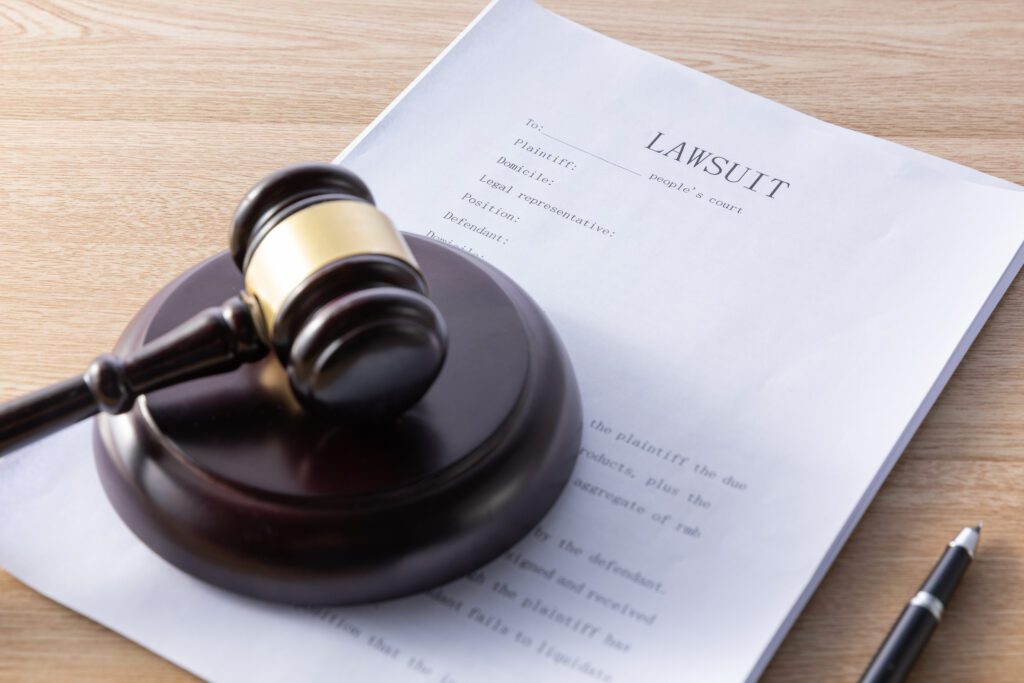Dealing with a personal injury can be a challenging and stressful experience. The consequences can be long-lasting and life-altering, whether you suffer from a vehicle accident, slip and fall, or even medical malpractice. Knowing your legal rights and how long do you have to sue someone for personal injury is essential in securing the best possible outcome for your situation. The statute of limitations, the time frame within which you have to file a lawsuit, varies from state to state.
Understanding Personal Injury Law
Personal injury law helps those who have been harmed due to another's negligence or wrongdoing seek compensation for their losses. This section will explore key concepts within personal injury law, including negligence, liability, and damages.
Negligence
The foundation of personal injury law is negligence. It occurs when a person disregards the level of care expected in a particular situation, resulting in harm to another person. To prove negligence, the injured party (plaintiff) must establish four components:
-
-
- Standard of care: The defendant owed an obligation to the plaintiff to provide a certain level of care and act responsibly.
- Breach of duty: The defendant does not meet that standard of care by acting carelessly or recklessly.
- Causation: The breach of duty of the defendant directly caused the plaintiff's injury.
- Damages: The plaintiff suffered physical, emotional, or financial harm as a result of the defendant's negligence.
-
Liability
Liability in personal injury cases refers to the legal responsibility of the at-fault party (defendant) for the injuries and losses sustained by the injured party (plaintiff). There are different types of liability, including:
-
-
- Strict liability occurs when a defendant is held responsible for an injury, regardless of whether they were negligent or not. Common examples include defective product cases and dog bite cases.
- Vicarious liability occurs when an employee is negligent, yet the employer is held responsible, such as in a workplace injury case.
- Joint and several liability occurs when multiple parties are found responsible for the plaintiff's injuries and can be held liable for the total damages.
-
Damages
Damages in personal injury cases represent the compensation the plaintiff receives from the defendant to make up for their losses. There are two main categories of damages:
-
-
- Economic damages: These include medical expenses, lost wages, property damage, and other quantifiable financial losses resulting from the injury.
- Non-economic damages: These encompass the more subjective, non-financial losses, such as pain and suffering, permanent impairments, and emotional distress.
-
On occasion, punitive damages may also be awarded as punishment to the defendant for particularly egregious behavior, hopefully deterring similar conduct in the future.
Understanding these concepts is crucial for navigating the complexities of personal injury law and obtaining fair compensation for your injuries.

Types of Personal Injury Claims
Personal injury claims arise from various scenarios where a person sustains injuries due to another party's negligence or wrongful acts. In this section, we'll discuss different types of personal injury claims, focusing on Car Accidents, Medical Malpractice, Slip and Fall Accidents, Sexual Abuse and Assault, Product Liability, and Breach of Contract.
Car Accidents
A common cause of personal injury claims is car accidents. They often result from factors such as reckless driving, driver negligence, and driving under the influence. Car accident victims may seek compensation for pain and suffering, medical expenses, lost wages, and property damages. Some states follow a “no-fault” system, where victims seek compensation from their insurance companies, while other states use a “fault” system that allows victims to sue the responsible party.
Medical Malpractice
Medical malpractice occurs when a healthcare professional's negligence or deviation from the standard of care causes injury to a patient. Misdiagnosis, surgical errors, medication errors, and birth injuries are examples of medical malpractice. To prove medical malpractice, a victim must establish that the healthcare professional owed them a standard of care and breached that duty, which in turn caused the harm suffered.
Slip and Fall Accidents
Slip and fall accidents are personal injuries sustained due to dangerous surroundings on someone else's property, such as wet floors, ice, or uneven pavement. Property owners have an obligation to keep their premises safe for visitors. To prevail in a slip and fall case, a victim must establish that the property owner knew or should have known about the dangerous condition and failed to address it.
Sexual Abuse and Assault
Sexual abuse and assault refer to non-consensual sexual acts or conduct against an individual. Victims of sexual abuse and assault may sue their assailants for damages, including medical expenses, therapy costs, and pain and suffering. In some cases, institutions like employers, schools, or churches can also be held liable for failing to prevent or address sexual abuse that occurs under their watch.
Product Liability
Product liability claims involve injuries resulting from defective or dangerous products. Companies' standard duty is to ensure their products are safe for consumer use. A product liability claim focuses on design defects, manufacturing defects, or inadequate warnings and instructions. To succeed in a product liability case, a victim must prove the product was defective, the defect caused their injury, and they used the product as intended or reasonably expected.
Breach of Contract
Although not a typical personal injury claim, breach of contract can lead to damages if the breach results in physical harm. For instance, if a contractor's breach of a contract to provide adequate safety measures during construction leads to an injury, the victim may sue for damages. A breach of contract claim's statute of limitations varies from state to state, often ranging from two to five years.
Important Factors in a Personal Injury Case
Evidence
Collecting substantial evidence is crucial for building a solid personal injury case. This evidence should include photographs of the accident scene, witness statements, and official reports such as police or medical records. The more evidence you have, the better your chances of proving fault and obtaining a fair settlement.
Medical Treatment and Records
Seeking prompt medical treatment after a personal injury is essential not only for your health but also for your case. Medical records can serve as crucial evidence of the extent and severity of your injuries. Be sure to keep detailed records of all treatment received, as well as any expenses incurred due to the injury.
Lost Wages
In many personal injury cases, the injured party may suffer from a temporary or permanent loss of income due to their lack of ability to work. This can have a profound impact on their financial stability. To calculate lost wages, consider the following factors:
-
-
- Time missed from work
- Reduction in earning capacity
- Loss of future earning potential
-
When calculating lost wages, it's essential to provide concrete evidence, such as pay stubs or other income documentation, to support your claim.
Financial Compensation
A personal injury lawsuit aims to obtain financial compensation to cover your damages and losses. Factors that may affect the amount of compensation you can recover include:
-
-
- Severity of your injuries
- Impact on your quality of life and ability to work
- Medical expenses, both current and future
- Lost wages: current and possible future wages
- Pain and suffering
-
By focusing on these crucial factors, you can build a robust personal injury case that seeks to obtain the proper compensation for your injuries and losses.

Filing a Personal Injury Lawsuit
Has the negligence of someone else harmed you? Do you want to file a lawsuit but don't know how long do you have to sue someone for personal injury? Follow these steps to get you started.
Steps to File a Lawsuit
-
-
- Gather evidence: Collect relevant documents, medical records, witness statements, and any other information that may support your claim.
- Obtain a personal injury attorney: Due to the complexities of personal injury cases, hiring an experienced lawyer can increase your chances of receiving adequate compensation.
- Review your case with your attorney: Go over the details of your accident, your injuries, and any evidence you've gathered with your lawyer, who will provide guidance on the next steps.
- Determine the appropriate statute of limitations: Check the time frame, or statute of limitation, for filing a personal injury lawsuit in your state. These time frames vary and depend on the nature of the case.
- File a complaint: A formal complaint will be drafted and filed by your attorney and submitted to the appropriate court, outlining your claims and the damages you seek.
-
Role of a Personal Injury Attorney
Legal professionals who represent individuals harmed due to the negligence or intentional actions of others is known as a personal injury attorney. Their primary responsibilities include:
-
-
- Evaluating your case and determining whether you have a viable claim for damages
- Helping you gather evidence and build a strong case
- Negotiating with insurance companies on your behalf
- Representing you in court if a lawsuit becomes necessary
-
Negotiating with Insurance Companies
One of the responsibilities of your personal injury attorney is to communicate and negotiate with the insurance company of the at-fault party in order to reach a fair settlement. This process usually involves:
-
-
- Presenting a demand letter detailing your claim and the compensation you seek.
- Engaging in a series of negotiations with the insurance company's adjuster.
- Reviewing any settlement offers to determine whether they adequately compensate for your losses.
-
If a satisfactory agreement cannot be reached through negotiation, your lawyer may recommend proceeding to trial to seek a better outcome.
Remember that the statute of limitations often applies when filing a personal injury lawsuit, so acting promptly and consulting an experienced attorney is essential.
Statutes of Limitations in Personal Injury Cases
Personal injury cases have specific time limits, known as statutes of limitations, within which lawsuits must be filed. These time limits vary by state and other factors, including the type of injury and specific circumstances of the case.
Factors Affecting Time Limits
In most states, the statute of limitations is two or three years for personal injury and wrongful death lawsuits. However, the limitations period could be as short as one year or as long as six years, depending on the state where the injury occurred. The date of the incident where harm was caused is when the clock typically starts.
Exceptions to Statutes of Limitations
Discovery Rule: is an exception to that statute of limitations that applies in situations where the injury wasn't immediately discovered at the time of the harmful event. In such instances, the clock on the time limit begins when the injured party becomes aware of or reasonably should have discovered the injury.
Tolling: The deadline for filing a lawsuit can also be extended, or “tolled,” if the victim is a minor or legally incapacitated. In these situations, the statute of limitations may not start running until the person becomes of age or regains legal capacity. Specific tolling rules depend on the state where the injury occurred.
Understanding the statutes of limitations for personal injury cases is crucial, as failing to file a lawsuit within the appropriate time limit may result in losing the right to seek compensation. This is another reason why consulting an experienced personal injury attorney is ideal, as they can guide you on the specific time limits and exceptions that apply to your case.

State-Specific Information
Laws from state to state vary. Therefore, you need to understand your state's statute of limitations and regulations. This can be done with help from a legal professional.
Alabama to Kansas
Like many other states, Alabama uses a 2-year statute of limitation timeframe when it comes to personal injury cases. Other states that also follow the 2-year timeframe are California, Kansas, and Texas, to name a few.
Kentucky to New Mexico
Kentucky and Tennessee both have a 1-year statute of limitations for personal injury cases. In contrast, New Hampshire and Maine have 3-year and 6-year limits, respectively. New Mexico's statute of limitations period is 3 years.
New York to South Dakota
New York, North Carolina, and Pennsylvania have a 3-year limit for filing personal injury lawsuits. Maryland and South Carolina also share a 3-year statute of limitations. In comparison, North Dakota has a lengthier time frame of 6-years.
Tennessee to Wyoming
As mentioned earlier, Tennessee has a 1-year statute of limitations, while its neighbor North Carolina has a 3-year limit. States such as Washington and Montana also have a 3-year statute limitation, like North Carolina, while Wyoming has a 4-year limit on personal injury cases.

Special Considerations
Cases Involving Minors
In situations where a minor is the person suffering from a personal injury, the statute of limitations may be extended. This is because the time limit for filing a lawsuit typically starts when the injured party becomes an adult. For example, if the statute of limitations is typically two years, and the minor turns 18, they could file a lawsuit up until their 20th birthday. This extended time frame allows minors to have the necessary time to pursue legal action once they reach adulthood.
Emotional Distress with Pain and Suffering
When it comes to personal injury cases, emotional distress with pain and suffering are crucial factors to consider. Unlike physical injuries, these damages can be more challenging to quantify and prove. However, they can still be included as part of a personal injury claim, and in some cases, they may even extend the statute of limitations.
For example, suppose the emotional distress or pain and suffering were not immediately apparent or discovered after the incident that caused the personal injury. In that case, the statute of limitations might be extended. This allows the plaintiff enough time to file their claim once they become aware of these additional damages.
In order to include emotional distress with pain and suffering in a claim, the plaintiff must typically provide sufficient evidence to support their allegations, such as medical records, therapy documentation, or testimony from mental health professionals.
Discovering the Injury After the Fact
In some cases, the injury might not be immediately apparent or discovered right after the event that caused it. When this occurs, the statute of limitations could potentially be extended. This is known as the “discovery rule,” which essentially allows plaintiffs additional time to file a lawsuit once they become aware of an injury that was previously unknown.
For instance, if someone did not initially realize they had suffered a traumatic brain injury during an accident, they may be granted more time to file a claim after the injury has been discovered and properly diagnosed. This extension ensures that plaintiffs have a fair chance to seek compensation for any damages they might have incurred, even if they were not immediately aware of the injury.
Wrap-Up of How Long Do You Have to Sue Someone for Personal Injury
Experiencing a personal injury can be stressful in itself. Adding on a personal injury lawsuit to reclaim any losses you may encounter can be downright challenging. Once you understand the key concepts of personal injury, you can determine if you should seek legal aid.
A legal professional will help guide you through the process and ensure you file your complaint within the allotted statute of limitations. These timeframes can differ from state to state but also on a case-by-case basis since there are some situations where the statute of limitation can be extended.
Understanding the statute of limitations applicable in your specific jurisdiction and the details surrounding your case is essential to protect your right to sue and seek compensation for your damages.




